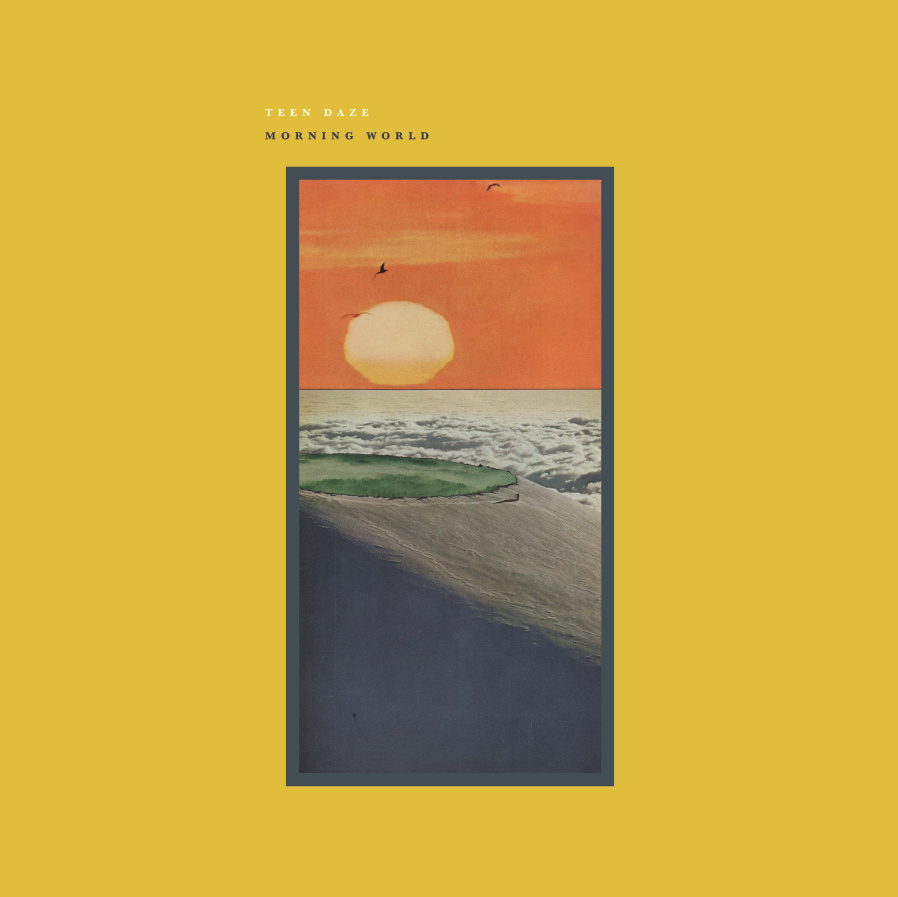By Jeffrey Trainor (The Cascade) – Email
The old saying that “variety is the spice of life” has been fully embraced by Abbotsford’s own Teen Daze on his newest record, Morning World. From the first notes, Morning World separates itself far from Teen Daze’s early outputs such as Four More Years and All Of Us, Together and moves his sound into a much warmer and more analog production.
This transition was partially due to Jamison, the man behind Teen Daze (who mysteriously gives no last name), moving out of his comfortable bedroom recording atmosphere and teaming up with acclaimed producer John Vanderslice at Tiny Telephone Studios in San Francisco. Jamison and Vanderslice were also joined by Simon Bridgefoot, most notably known for his drumming with Jordan Klassen. The trio shaped the sound of the album by recording at Vanderslice’s studio while also bouncing ideas for each song off of each other.
Morning World submerges Teen Daze into a full band sound that showed glimpses on his last release, Glacier. It is easy to tell that the album is meant to be performed by a group and not solo as Teen Daze has traditionally done. Each track is laced with texturally diverse melodies and instrumentation that breathe very freely. This approach sets forth Jamison’s clear desire to find traction in operating Teen Daze as a full, live indie band.
The record initially stumbles out of the gate, as the first two tracks are widely disconnected in sound and concept. Opener “Valley of Gardens” slowly builds and melds ambient guitar, complex drums, and swooning cellos, which all make way for a multi-layered choral vocal section. In contrast, the following track “Pink” borders on punk rock guitar tones and crashes around like a drunken adolescent who just discovered the potential of alcohol. The only real similarity between the two is the hazy and dreamy vocal overtop.
However, once you get past the album’s awkward beginning, you start to find the engaging concrete thoughts and ideas within the album. The album’s mid-section, featuring the tracks “Morning World,” “It Starts at the Water,” “Post Storm,” and “Life in the Sea,” provides a solid and consistent dream pop / rock atmosphere. The success of these tracks mainly comes through layering and the outstanding use of dynamics. Both “It Starts at the Water” and “Post Storm” build to a point of climax and release, but in two opposing ways.
“It Starts at the Water” features the slow addition of pianos, guitars, and eventually drums and bass, moving from a simple, soft, and intimate story about meeting a strange new person in a strange new land, into a head-bopping indie rock tune. On the other hand, the almost six-minute “Post Storm” features a five-minute instrumental to open, drawing heavy similarities to soundscapes found within the post-rock genre as well as indie movie scores. The most present musical aspect around the climax of the instrumental section is a cello that beautifully ties the piece together — creating the most appealing melody on the album.
The cello playing on “Post Storm” doesn’t exist in a vacuum; it merely represents the best example of the excellent cello work of Nathan Blaz throughout the album. Blaz is best known for his role in the band Geographer but his contributions to tracks such as “Life in the Sea,” “Garden Grove,” and “Valley of Gardens” help solidify the analog space Morning World is working to occupy.
Though there are multiple moments of dense complexity within the 11 tracks of the record, Teen Daze also finds success in slowing things down and letting emotion and vulnerability show. The album closer “Good Night” best encompasses this fact , as it is arguably the most complete and well-rounded track on the record, despite only featuring Jamison’s mourning voice and a simple and repetitive piano melody. A track like this works to show that Teen Daze is more than just a one dimensional artist and that he is more than willing to create mosaic-like records which are designed to bring the listeners through both highs and lows, much like life itself.
Some other notable moments on the album include the funky track “Along” which brings Teen Daze into an almost “indie Pink Floyd” feel, while the following track “Infinity” takes a more direct approach to indie rock. The crowning achievement of “Infinity” is its transition into the outro section. Jamison cuts the track into half time and sings an almost stadium-ready melody — “Let me stay a little longer / I can find my way back home” — that is begging to be sung by audiences (and I am sure they will oblige).
It is in this confident moment where Teen Daze best highlights the new and dynamic shift in his philosophy. In the past, it has often felt as though Jamison has been hiding behind his production, relying on beats and grooves to carry him through. In contingence with this, up until this album, singing hadn’t necessarily been a prominent feature within his records. However, Morning World presents a grand unveiling, or an invitation, into the vulnerable psyche of Teen Daze. This is Jamison truly being honest with himself, opening his mouth and proclaiming, “Good morning, world.”



